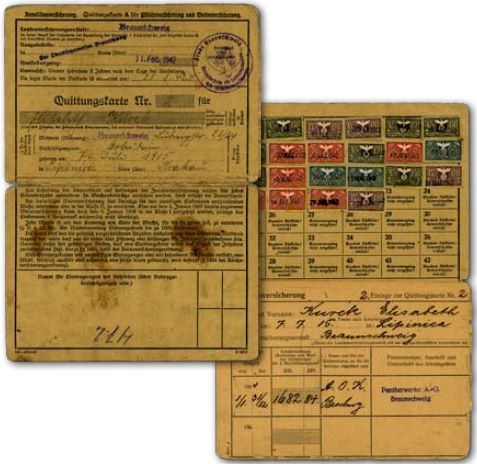“insurance card” receipts was used within the Reich and the incorporated territories as a compulsory accident insurance (Invaliderversicherung). The receipts served as a confirmation of the insurance payment by the German and Polish employees. These receipts confirmed the discharge of the relevant insurance premiums. Special stamps were glued to the back of one’s card receipts once a week. Since July 1942, Quittungskarte should have contained information about the period of contribution, the amount, one’s health insurance’s company name which received the premiums and the employer. The agency responsible for the insurance scheme should send after a year, or after 3 years latest, a report to the governmental agency handling these affairs. In the early years of the war in the incorporated territories there were also used pre-war Polish ‘kwitowa’ card forms. It was possible to use this kind of ‘Quittungskarte’ because Polish and German social insurance systems were similar before 1939. On one side there was information about the social insurance company. On the other side there was information about the sickness fund of the holder (AOK here – Allgemeine Ortskrankenkasse), and stamp or some signature from employer. Card receipts were valid for two years from the date of issue. Stamps on this card also contained information about previous stamps on the previous card receipts. If one changed employers, his receipts could still be used and confirmed the continuation or renewed insurance. Insured workers could receive a summary of discharges by card receipts of contributions as a summary-book (Sammelbuch).
